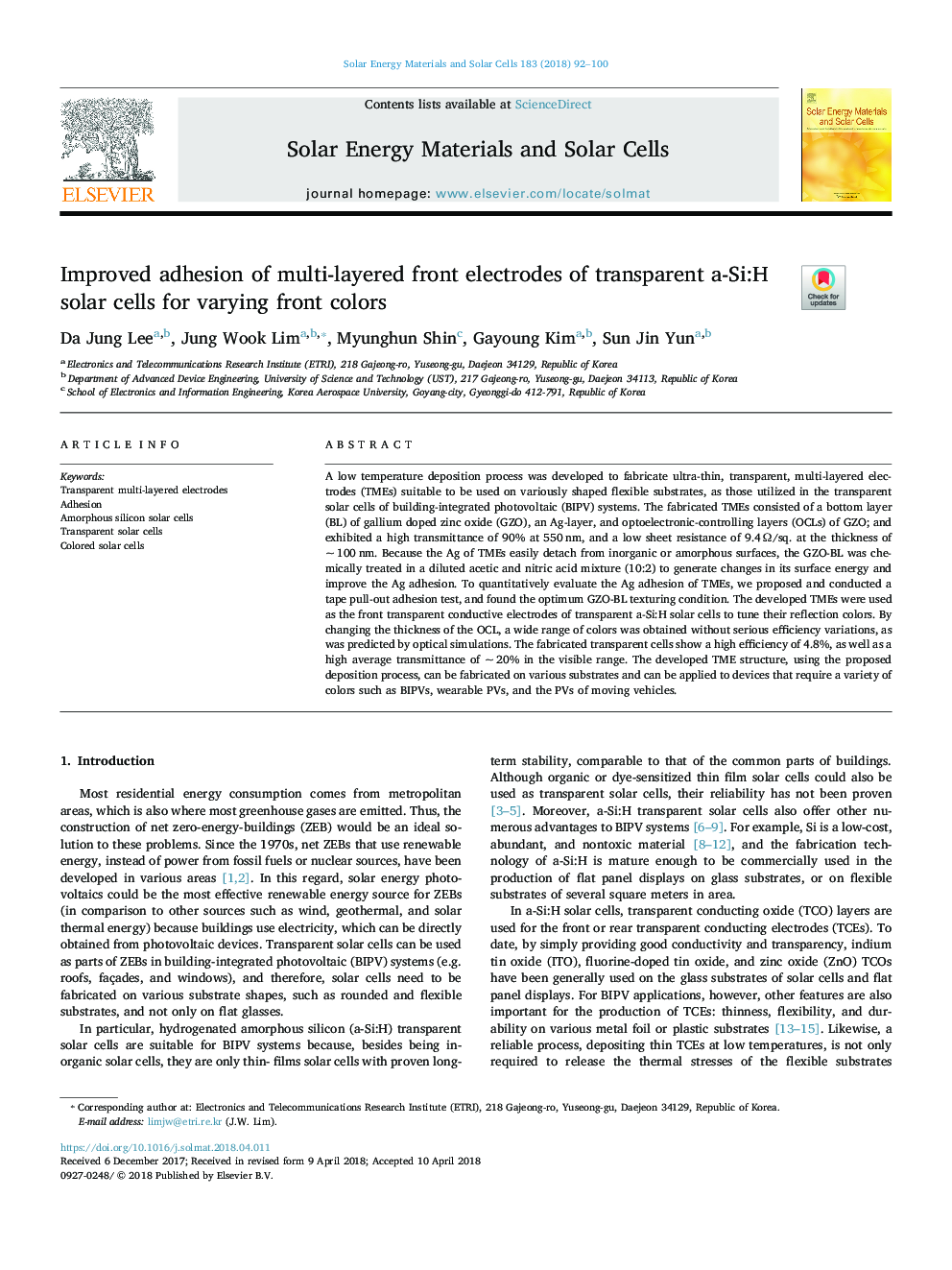| Article ID | Journal | Published Year | Pages | File Type |
|---|---|---|---|---|
| 6534072 | Solar Energy Materials and Solar Cells | 2018 | 9 Pages |
Abstract
A low temperature deposition process was developed to fabricate ultra-thin, transparent, multi-layered electrodes (TMEs) suitable to be used on variously shaped flexible substrates, as those utilized in the transparent solar cells of building-integrated photovoltaic (BIPV) systems. The fabricated TMEs consisted of a bottom layer (BL) of gallium doped zinc oxide (GZO), an Ag-layer, and optoelectronic-controlling layers (OCLs) of GZO; and exhibited a high transmittance of 90% at 550â¯nm, and a low sheet resistance of 9.4â¯Î©/sq. at the thickness of ~â¯100â¯nm. Because the Ag of TMEs easily detach from inorganic or amorphous surfaces, the GZO-BL was chemically treated in a diluted acetic and nitric acid mixture (10:2) to generate changes in its surface energy and improve the Ag adhesion. To quantitatively evaluate the Ag adhesion of TMEs, we proposed and conducted a tape pull-out adhesion test, and found the optimum GZO-BL texturing condition. The developed TMEs were used as the front transparent conductive electrodes of transparent a-Si:H solar cells to tune their reflection colors. By changing the thickness of the OCL, a wide range of colors was obtained without serious efficiency variations, as was predicted by optical simulations. The fabricated transparent cells show a high efficiency of 4.8%, as well as a high average transmittance of ~â¯20% in the visible range. The developed TME structure, using the proposed deposition process, can be fabricated on various substrates and can be applied to devices that require a variety of colors such as BIPVs, wearable PVs, and the PVs of moving vehicles.
Related Topics
Physical Sciences and Engineering
Chemical Engineering
Catalysis
Authors
Da Jung Lee, Jung Wook Lim, Myunghun Shin, Gayoung Kim, Sun Jin Yun,
